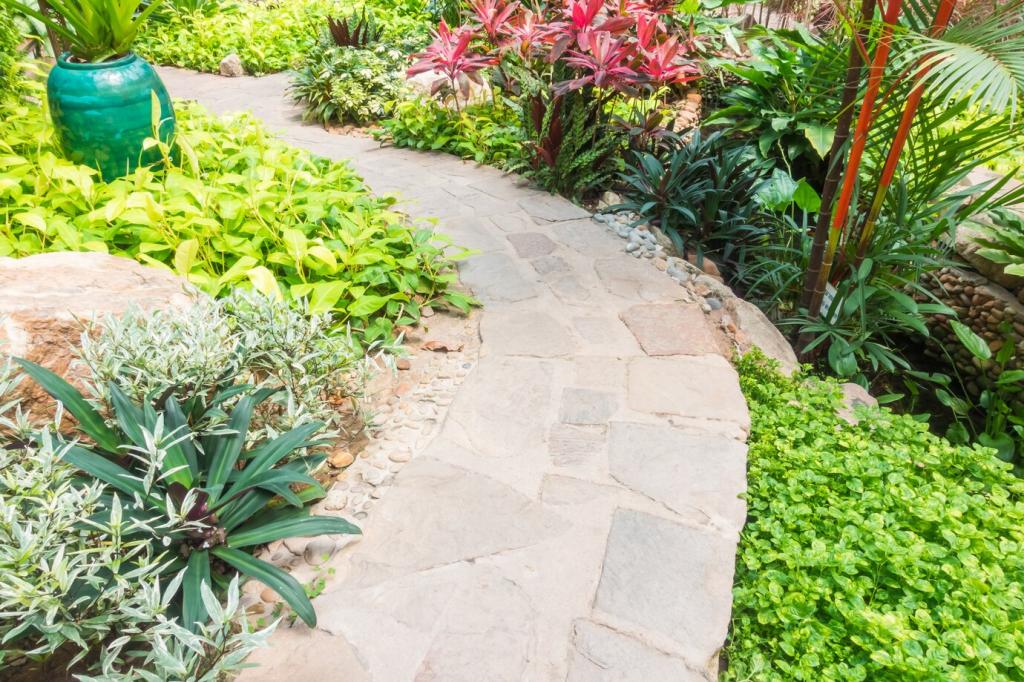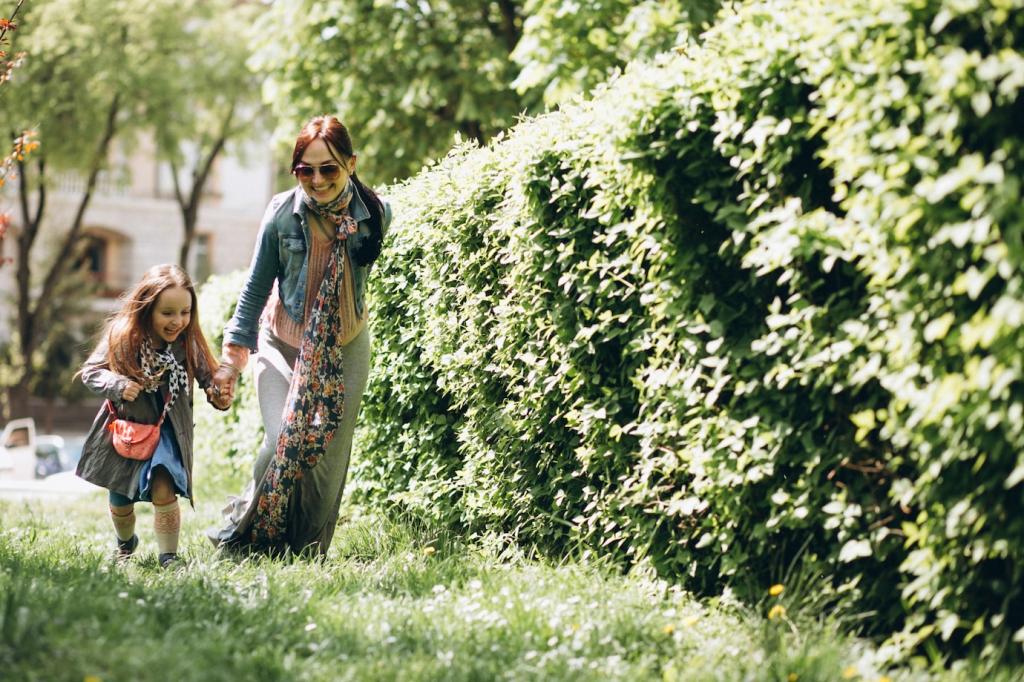
Urban Green Spaces: Designing with Sustainability in Mind
Today’s chosen theme is Urban Green Spaces: Designing with Sustainability in Mind. Step into a city where shade feels like a welcome handshake, rain becomes a resource, and neighbors meet under canopies they helped plant. Join our community, subscribe for weekly insights, and tell us how you imagine greener streets where you live.
Principles that Make City Nature Thrive
Life-Cycle Thinking Over Quick Fixes
Designing with durability, repair, and reuse in mind prevents shiny new parks from becoming maintenance burdens. Consider materials that age gracefully, plant palettes that match microclimates, and layouts that invite stewardship. Comment with one design choice you think should last decades, not seasons.
Context-First, People-First Design
Great city nature respects wind, sun, movement, and stories. One plaza we love rotated benches to face winter sunlight, preserved a mature oak, and added windbreak shrubs. The result felt warmer, quieter, and more welcoming. What small context shift would transform your favorite corner?
Design for Co-Benefits, Not Single Uses
A shaded play space can also cool nearby apartments, guide pollinators, and slow stormwater. When features carry multiple roles, budgets stretch and communities benefit more. Share a place where a single green feature delivers comfort, habitat, and delight—bonus points if it is walkable from transit.
Planting for Place: Native Species and Healthy Soils
Choose species that match your rainfall, heat, and wind. Native and regionally adapted plants support local insects and birds while reducing fertilizer needs. If your summers scorch, select drought-tolerant grasses and deep-rooted perennials. Which local species would you champion along your block?
Shallow basins planted with tough perennials capture first-flush runoff, filter pollutants, and bloom into pollinator cafes. We added playful stones showing floodlines so kids could see water at work. Would your school or library welcome a small rain garden beside the downspout?
Blue-Green Infrastructure: Managing Water Wisely
Permeable pavers and stabilized gravels let water pass through while staying accessible for wheels and walkers. Plan for winter maintenance and tactile guidance to keep routes safe. If your alley floods, consider a patchwork of permeable bays—start small, measure impact, and iterate.
Blue-Green Infrastructure: Managing Water Wisely
Five-Minute Green for Every Household
Aim for pocket parks and shady stops within a short walk. Benches, fountains, and stroller-friendly paths welcome ages and abilities. We mapped a district and found a transit node perfect for a mini-park. Where could your neighborhood carve out a five-minute refuge?
Design for Safety and Belonging
Clear sightlines, layered lighting, and steady programming turn spaces into trusted rituals. Chess tables under trees drew teens and elders together, while smooth paths invited evening walkers. Share a detail—lighting, art, or seating—that makes you feel at home outdoors.
Culturally Responsive Landscapes
Edible gardens, bilingual signs, and gathering areas reflect heritage and welcome diverse traditions. Co-design sessions can surface plant preferences and celebration calendars. Comment with plants or features that feel like home to your family; we will add your ideas to future guides.

Small Footprints, Big Impact: Rooftops, Parklets, and Walls
Lightweight soils, drought-resilient species, and safe access transform roofs into habitat and insulation. A modest roof meadow cooled a top-floor studio enough to retire the portable AC. If you have a view from above, imagine it stitched with sedum, grasses, and bee song.
Reclaim curb space with planters, shade, and sturdy seating. A weekend pop-up tested traffic, noise, and usage before investing in permanent materials. Neighbors lingered longer than their coffees. Which storefront would you nominate for a pilot parklet this summer?
Green walls can temper facades and delight passersby when irrigation and structure are right-sized. Choose modular panels, recirculating water, and hardy species. If you have tried a vertical garden, tell us what kept it lush through wind, heat, and holidays away.
Community Stewardship and Long-Term Care
Watering, loosening mulch, and checking stakes can double a young tree’s chance of thriving. A Saturday crew with kids counted worms between watering rounds, turning chores into discoveries. Would your block pledge to care for three new trees this year?

Measuring What Matters
Shade reduces surface temperatures and encourages walking, especially for seniors and families. Map heat-prone routes and plant for relief where people already move. Have you noticed a corner that feels ten degrees kinder under a new tree? Tell us where and why.
Measuring What Matters
Compare rainfall events with infiltration performance to refine designs. Before-and-after photos and maintenance logs reveal which features outperform. Share your storm story: where did water go after the rain garden arrived, and what tweak would make it even better?


